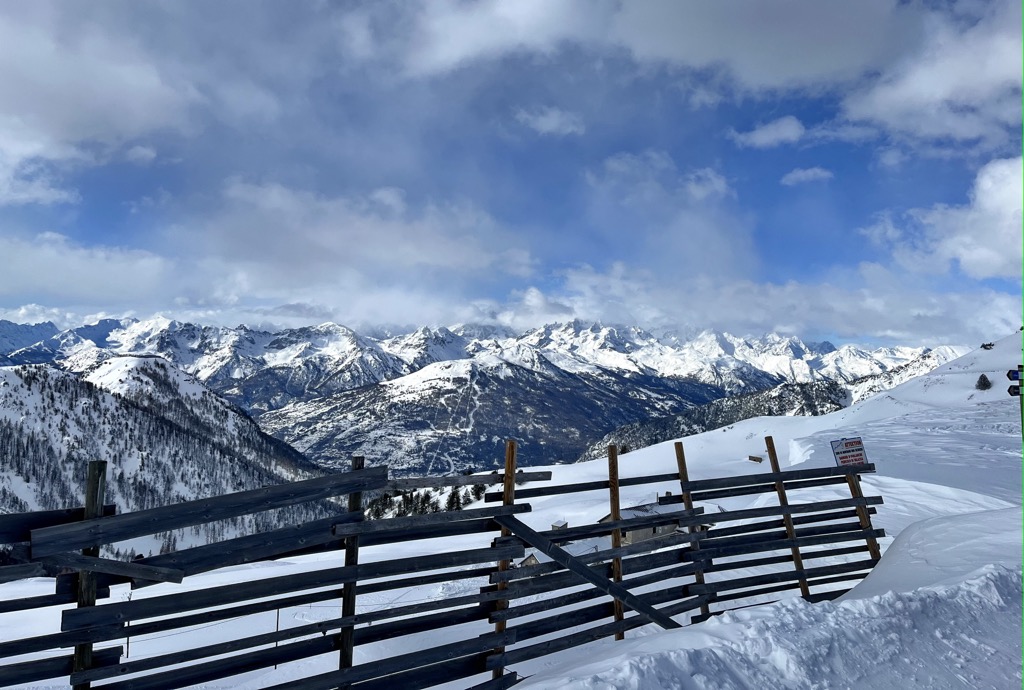Get PeakVisor App
Sign In
Search by GPS coordinates
- Latitude
- ° ' ''
- Longitude
- ° ' ''
- Units of Length
- Temperature

Yes
Cancel
Share ×

Scan the QR code and open PeakVisor on your phone
❤ Wishlist ×
Choose
Delete
Montgenèvre Ski Resort is one of more than 250 ski resorts in France. The resort is located in the Provence-Alpes-Côte d'Azur region on the border with Italy. The main feature of Montgenèvre is the namesake Col du Montgenèvre pass of 1,860 m (6,102 ft) and its surrounding mountains with a great number of slopes and freeride descents in an uncrowded setting. It is also the only French ski resort connected to one of the biggest areas in Europe and the world. The Via Lattea (“The Milky Way”) includes the Italian resorts of Claviere, Sestriere, Sauze d’Oulx, San Sicario, and Pragelato with more than 400 km of slopes and 70 ski lifts in total. Montgenèvre itself has 110 km (68 mi) of slopes and 30 ski lifts. Montgenèvre and the Via Lattea are suited for skiers of all levels. Given its enormous size, the domain has dozens of kilometers of easy and difficult runs, and everything in between. The Montgenèvre (Via Lattea) season is from early December to mid-April in general. The resort’s advantageous geographic location makes it one of the snowier resorts in the Alps.
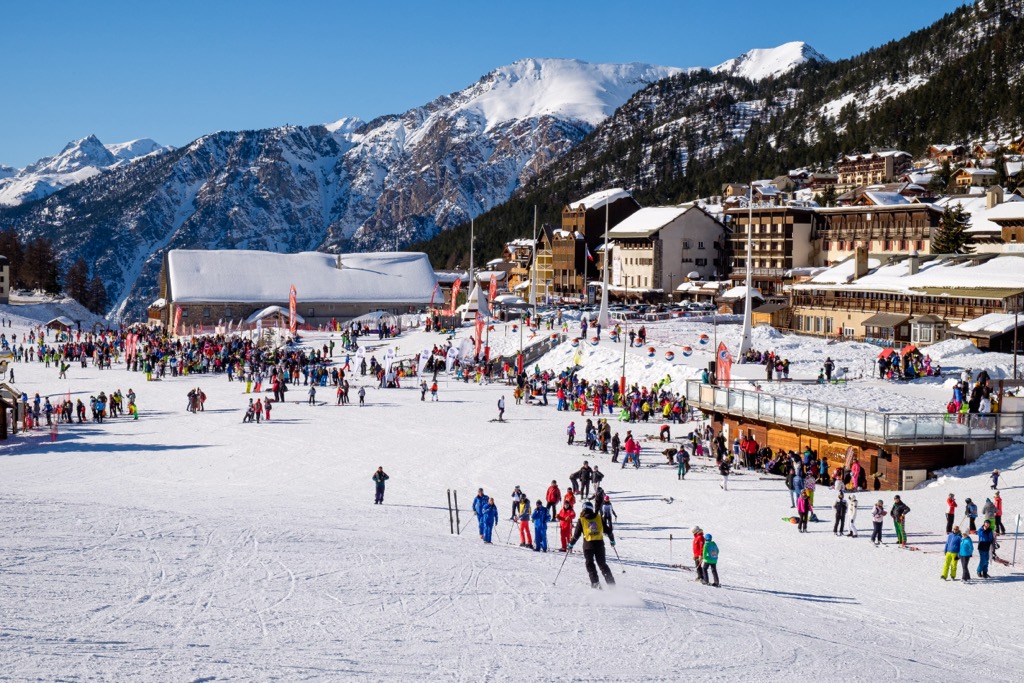
Montgenèvre Ski Resort is located in the Hautes-Alpes department of the Provence-Alpes-Côte d'Azur region of France, which is famous for its period of heavy snow followed by long stretches of stable Mediterranean weather (sunshine).
Geographically, the resort occupies the Massif des Cerces of the Cottian Alps range of the Western Alps. The slopes sit atop the Col du Montgenèvre pass of 1,860 m (6,102 ft) at the border with the Piedmont region of Italy. The resort occupies both sides of the col. Slopes on the north side face south, while slopes on the south side face north - you can usually find good snow on at least one aspect on any given day.
The resort’s top station is Le Grand Chalvet (2,632 m / 8,535 ft), so the difference is 772 m (2,433 ft). For comparison, the altitude of the entire Via Lattea Ski Area is between 1,372 and 2,789 m (4,501 and 9,150 ft) with a difference of 1,417 m (4,648 ft).
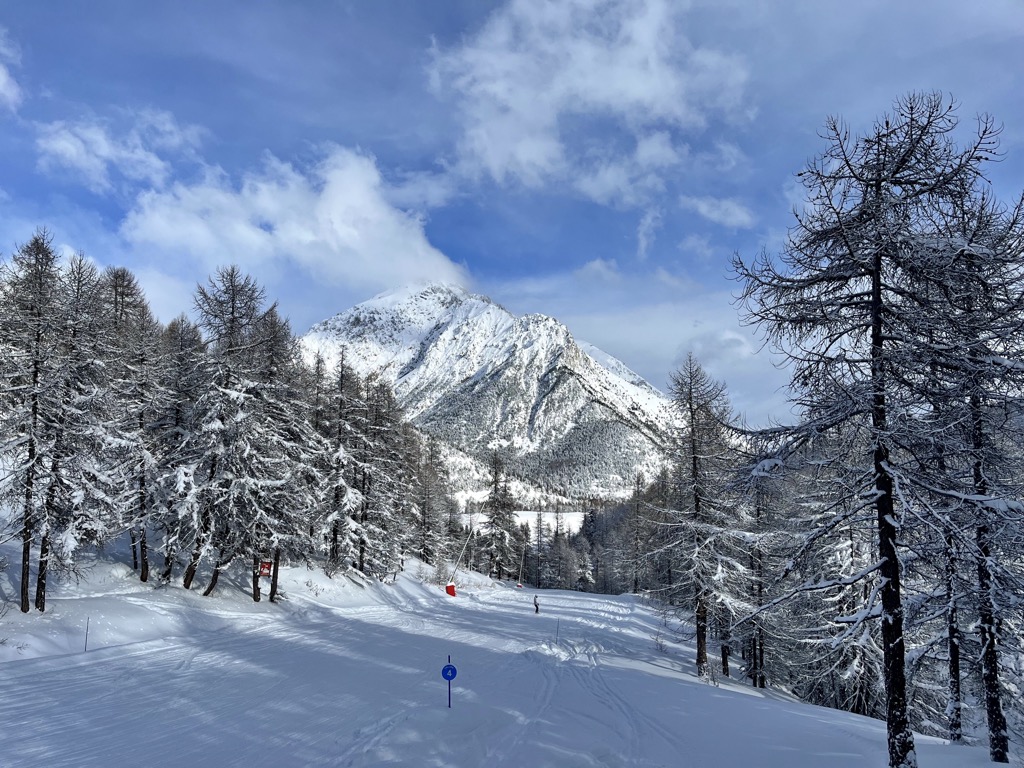
Although Montgenèvre (as well as Via Lattea) is not the highest in altitude, its location ensures that it is one of the most snowsure ski centers in France. Due to its location near the center of the Southwestern Alps, it receives snow from the east, the west, and to a lesser extent, the north and south. This is uncommon in the Alps, where the mountains are so large that they block storms from certain directions. It’s often remarkable how much more snow there is in Montgenèvre than at the high resorts of the Western Alps such as Les 2 Alpes and Alpe d’Huez.
The village of Montgenèvre itself is purpose-built but is surprisingly devoid of the garishness and sprawl of other French megaresorts.

Getting to Montgenèvre Ski Resort can be complicated by European standards. Many ski resorts in the Alps have a closer major airport and a much easier access road than Montgenèvre. However, the abundance of international visitors suggests that folks would rather go the extra kilometer to ski here.
The Italian city of Turin is the nearest large metropolitan area, and the resort’s clientele is often split between French and Italians.
For flights farther than the European Union, Milan, Lombardy region, always has cheaper options and better deals on car rentals than Turin. There are direct flights to Milan from anywhere in the world. Depending on where you are coming from, the conveniences of traveling to Milan are probably worth the extra 90 minutes of driving time.
Grenoble is the closest major French city and it also has a small airport. Europeans traveling within the continent might find agreeable flights to either Milan or smaller Turin and Grenoble.
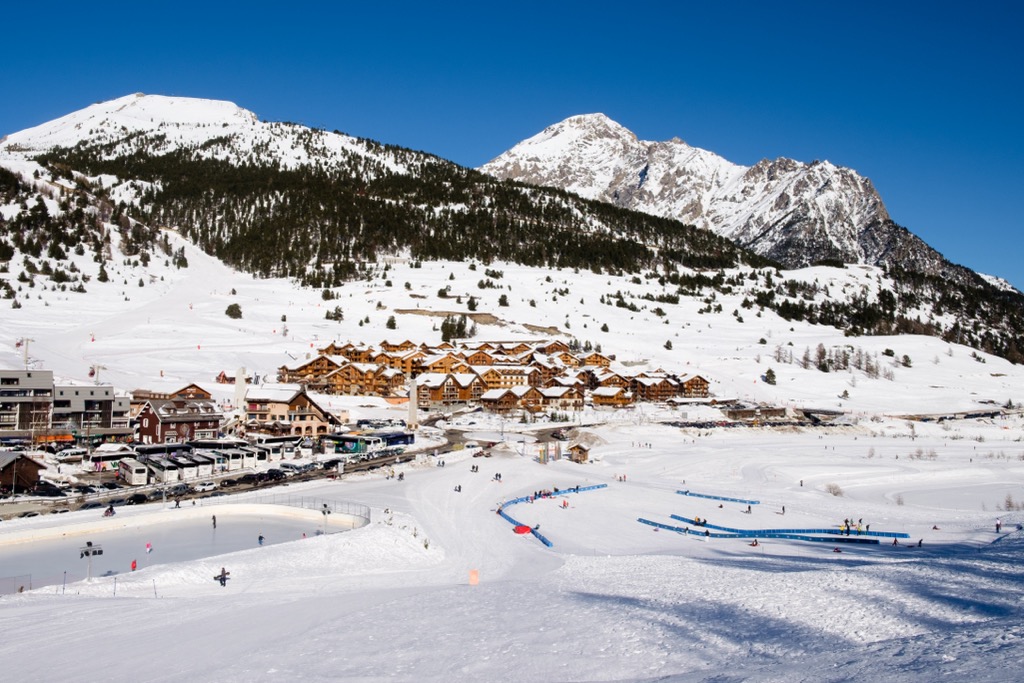
Montgenèvre Ski Resort is located on a mountain pass nearly 1,000 m (3,280 ft) above the nearest town of Briançon, about 10 km (6.2 mi) away. The town is visible from the resort. The drive takes about 20 minutes with all of the elevation gained along a short stretch of road in clear weather conditions — it can take much longer in inclement weather. But the road is well-maintained during and after snowstorms with a small army of tractor-plows patrolling the narrow, steep switchbacks.
However, the Col du Montgenèvre is a serious drive in a snowstorm from either the French or the Italian side. In general, Italy is the easiest region to drive from because the Italian plain offers quick and easy miles in a car. Those driving from France, Switzerland, Austria, Germany, and all points north and west will have to cross the Alps, which presents its own set of challenges.
Turin is an hour and 40 minutes from Montgenèvre. Milan is another 90 minutes down the road.
Grenoble is only 127 km (79 mi) along the D1091, but the drive will take close to two and a half hours due to the severity of the terrain. Google Maps will route you around the easier mountain pass through Valloire, which is the same amount of time but adds 52 km (32.3 mi) to the trip — and therefore 15 euros in fuel. I recommend the D1091 as long as the weather is alright. It’s an incredible drive.
There is abundant free parking at the base of the resort (Chalmettes) and along the road in various other lots if that fills up.
Italy and France have great public transportation for those looking to keep costs down. Despite its perch atop a high mountain pass, trains and buses run to Montgenèvre regularly. The resort’s website meticulously details public transport, rideshare, and flight options.
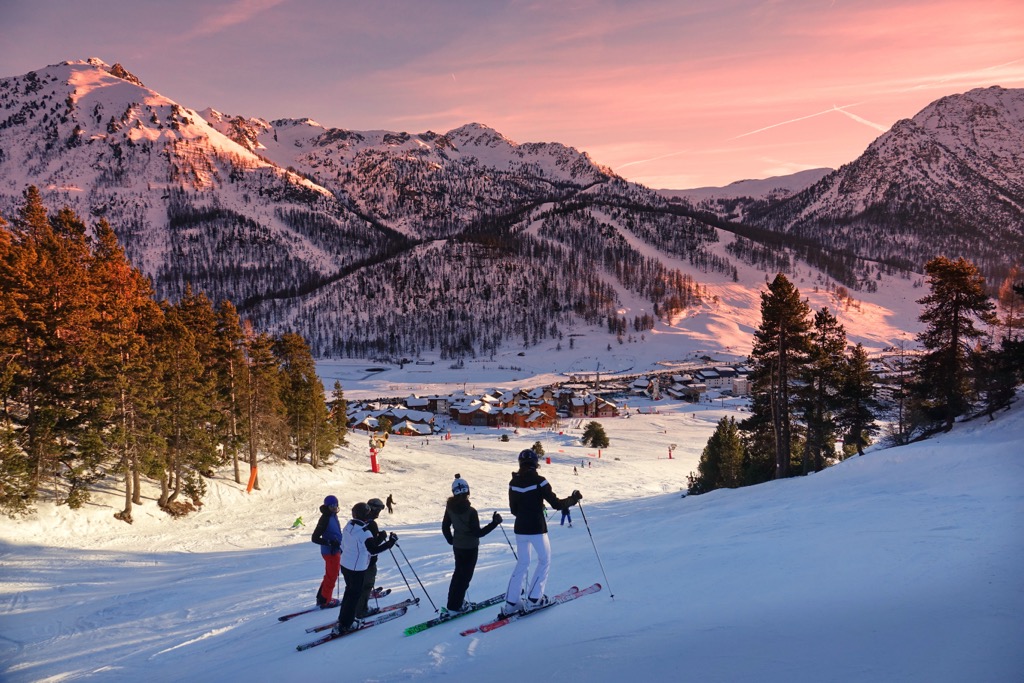
The village of Montgenèvre is relatively small so your own two feet will get you wherever you need to go — even if they are still encased in ski boots. The commercial part of the village is about just one kilometer (0.6 miles) long. To walk from one end to the other might take 15 minutes (again, in ski boots).
You can help yourself out by skiing down the piste closest to your accommodation at the end of each day. Skiing down to the opposite end of the village could result in a long walk.
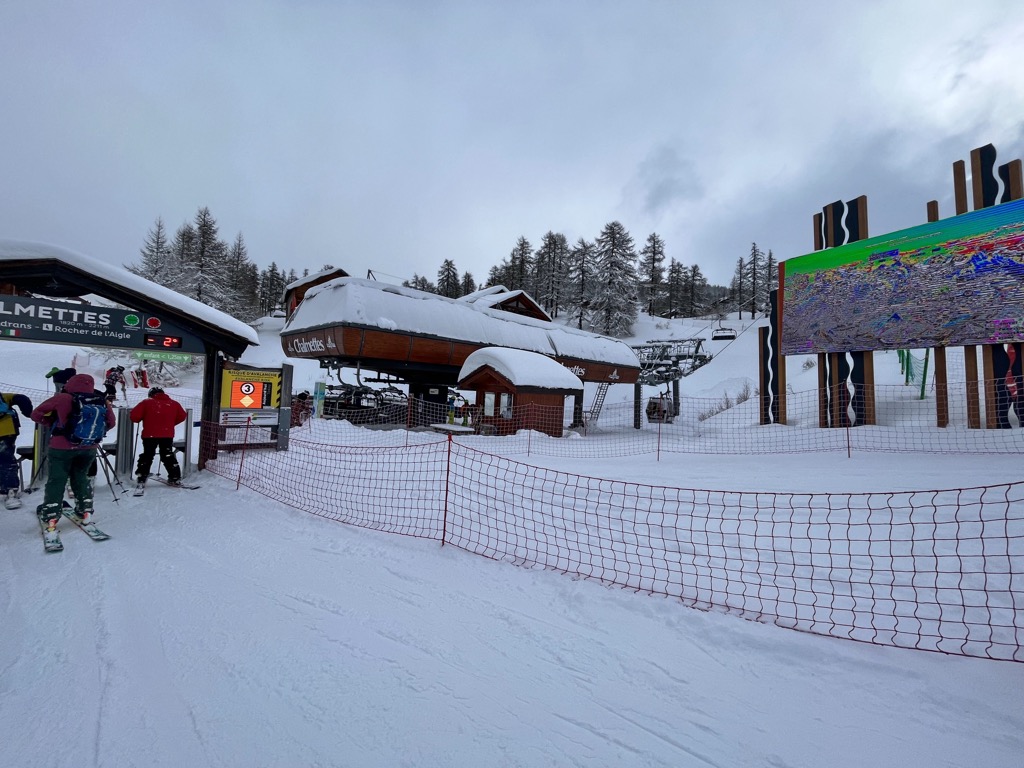
The snow season in Montgenèvre reliably lasts from early December to mid-April. On average, it receives quite a bit of snow. With an abundance of grassy slopes, it only takes one big storm from the east or west to bury the resort and set up the base for the season. However, it’s increasingly difficult to predict when this storm will come. The resort can get hammered with a big storm anytime between November and May.
The resort’s base is relatively high, but the summit is lower than many other resorts in the Alps. Increasingly, this means rain events and excessive warmth, even on the upper mountain. For example, in January 2022, an unprecedented storm brought the rain-snow line as high as 3,000 m (9,842 ft), much higher than the summit of the resort.
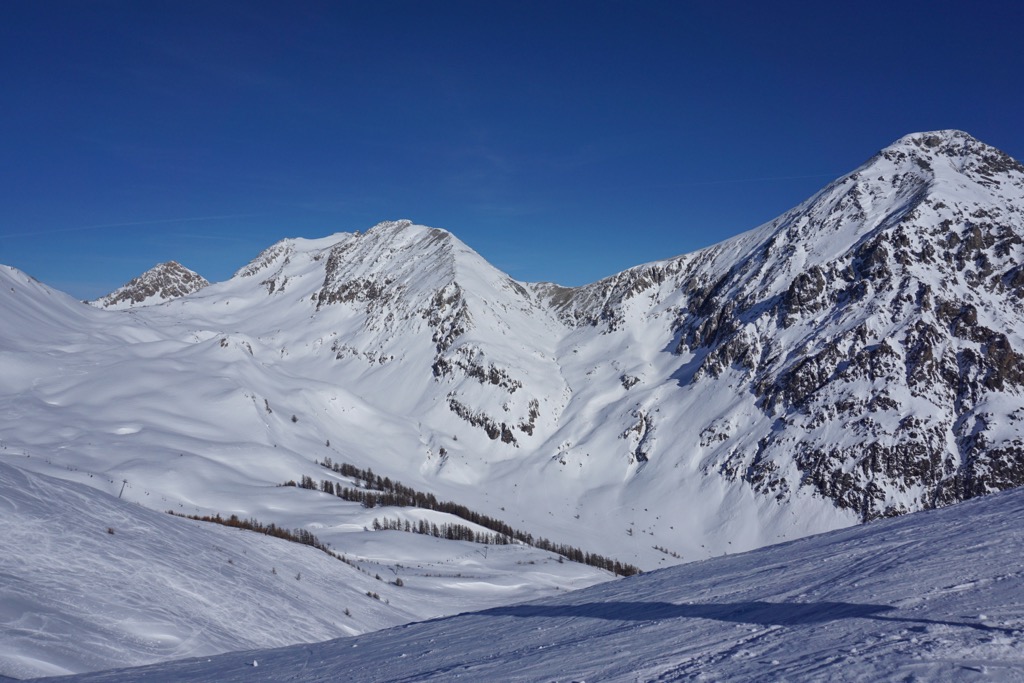
Montgenèvre (Via Lattea) offers desirable snow and weather conditions for skiing. I’ve already touched upon most of the factors that make snow conditions favorable including:
Not only does Montgenèvre resort have lots of north-facing slopes, but it also has slopes in every other aspect. The Secteur du Chalvet covers the northern side of the col and its slopes are predominately south-facing. There are east-facing slopes off the backside of the Rocher d’Aigle. The beautiful Le Chenaillet offers big west-facing runs back into the Grondrans sector. The diversity of aspects makes it possible to find good snow conditions on almost any given day, whether powder or soft spring corn.
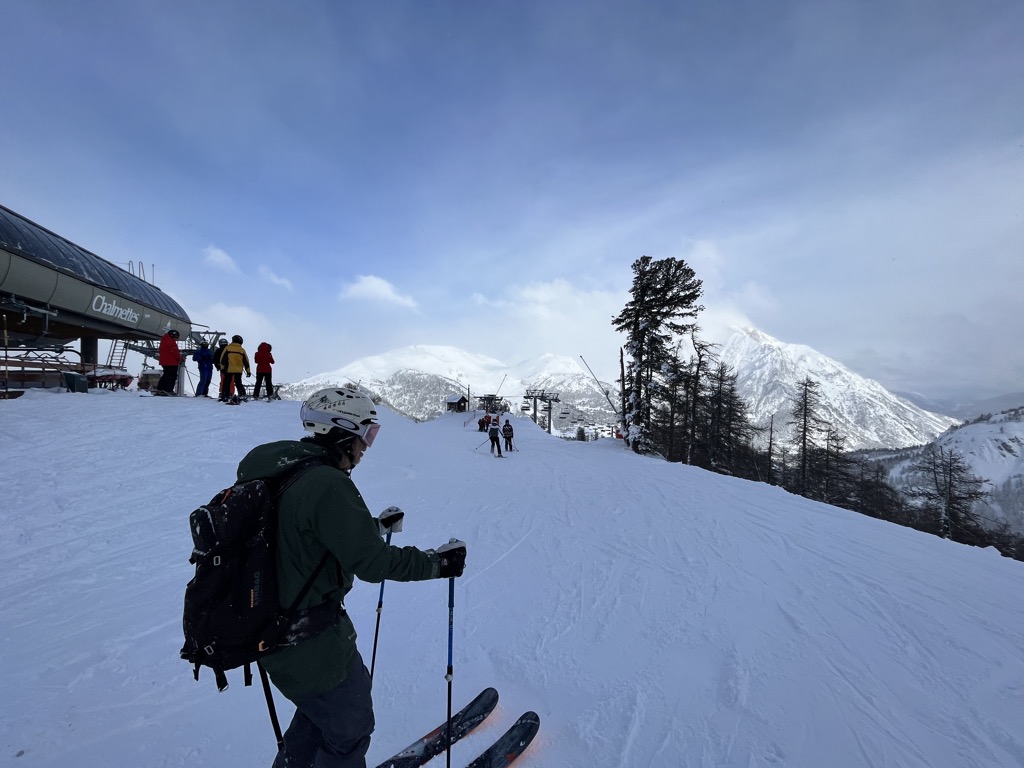
With 30 ski lifts, Montgenèvre is a big ski resort. However, it’s easy to get from one end to the other. Many of the lifts serve the same terrain so the layout is not as difficult to grasp as it may seem. It usually only takes a lift or two to connect zones. Nevertheless, unlike some of the big freeride areas with cable cars, it can take as many as four lifts to get back to the top of the mountain. Here are a few of the most important details.
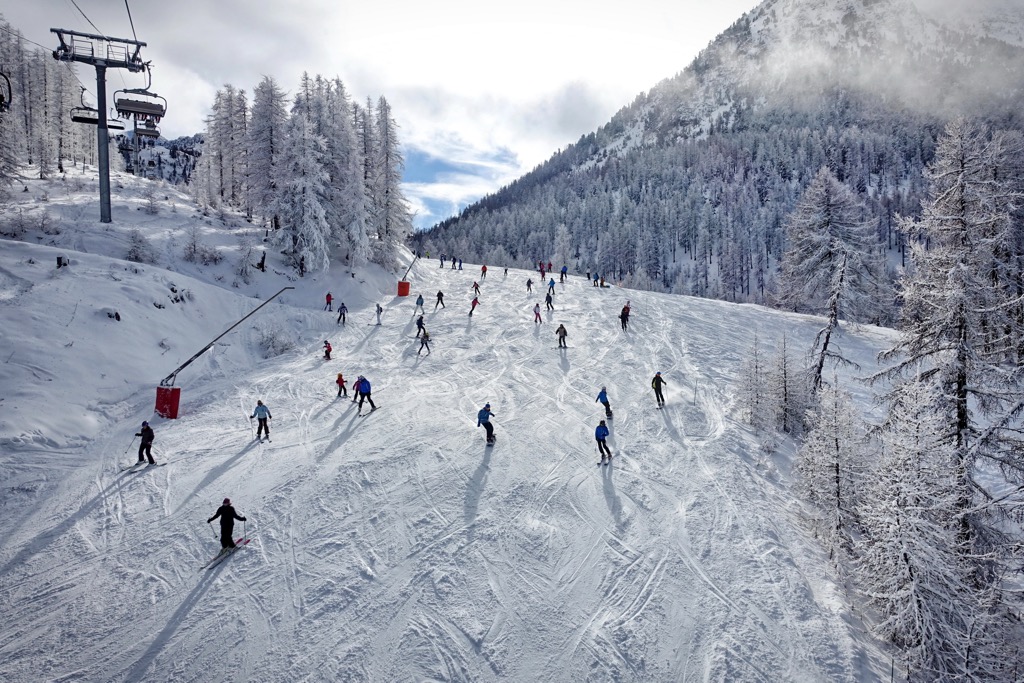
With five distinct domains or ‘sectors,’ there is something for everyone at Montgenèvre (Via Lattea). There are even some sections of extreme skiing, which is probably the rarest type of terrain at ski resorts.
The Chalmettes is the main ski lift heading out of the village and it serves a large swath of intermediate fun intermediate pistes with a shadowy aspect, good snow, and the best tree skiing at Montgenèvre. It is also the only way to access the l’Aigle zone. The slopes here may be slightly more crowded than other places on the mountain, especially as you get closer to the village. It will be necessary to ski slowly on the piste.
There is also plenty of beginner-friendly skiing on the lower mountain, where a few of the drag lifts stay open until 5 pm.
The Chalvet is a wonderful addition to Montgenèvre Ski Resort because it adds a south-facing zone for skiers looking to cruise around in the warm sun. Most of the pistes here are intermediate-friendly, although there are also a few black pistes interspersed throughout. The off-piste is mostly open and relatively low angle.
From the top of the Chalvet lift, this zone offers the most considerable vertical descent in Montgenèvre. Attention: Stay out of the protected area below the Serre Thibaut lift; it is probably for the endangered Tetra, a pheasant-like bird with very sensitive alpine habitat requirements. These birds are easily disturbed by humans, especially skiers, who can startle them and force them to exert unnecessary energy during the winter fasting period.
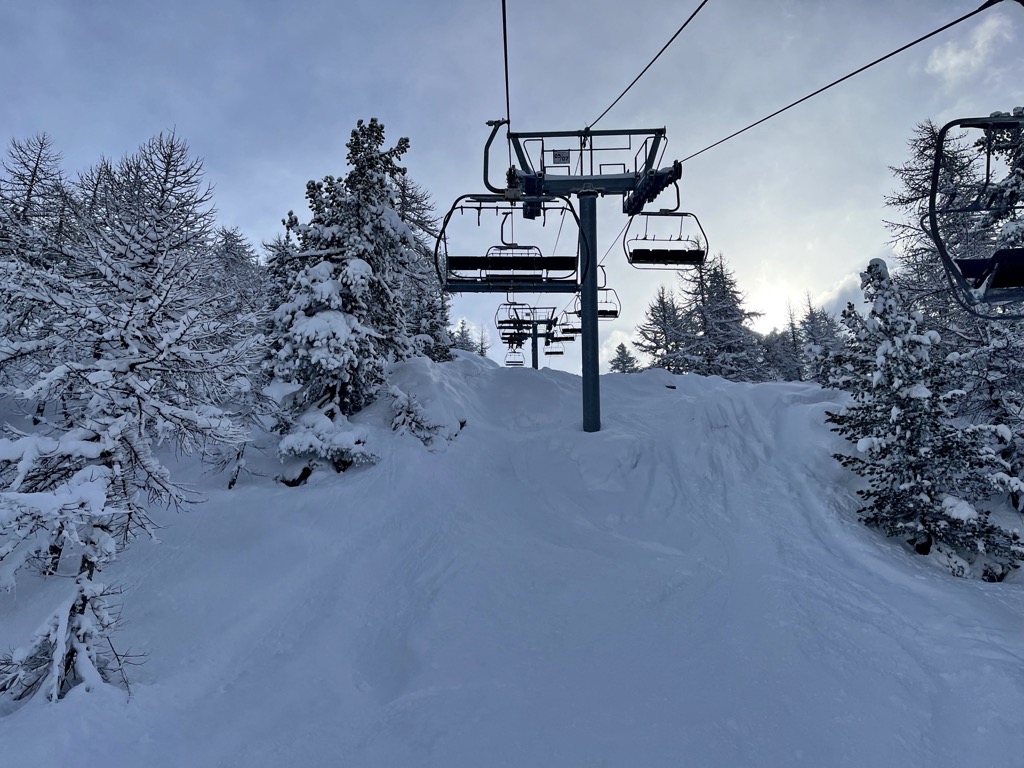
The Gondrans is similar to the Chalvet, albeit with a smaller vertical drop and southern exposure. When the Chalvet begins to melt out in spring, the Gondrans will offer great wide-open pistes for intermediate skiers. The off-piste is also similar to the Chalvet — wide-open and low-angle. Several lifts serve this area and there will never be lines.
The l’Aigle is the crown jewel of Montgenèvre Ski Resort. The high-speed Rocher d’Aigle chairlift serves the entire zone, so a fair bit of traversing and hiking is required to access some of the freeride descents. Montgenèvre is not an infamous freeride destination, so many of these descents stay fresh for days after a storm. Plus, Italians are notorious for their predilection to the pistes, and many of the skiers at Montgenèvre are Italian.
On the other hand, these descents require a fair bit of hiking with several lift rides to return. It’s only possible to do a few laps per day. While there are a few trees at the lower reaches of this zone, the terrain is mostly alpine. There is the perfect blend of faces, bowls, and couloirs. With such a diversity of terrain, even extreme skiers will find some short steep passages and drops. While the terrain necessitates caution, most freeriders will figure their way around without the use of a guide.
Intermediate and advanced-level skiers will love the long red pistes that descend from the top of the chair. You can also use this access to connect to the upper reaches of the Italian side of the resort, descending into the village of Claviere.
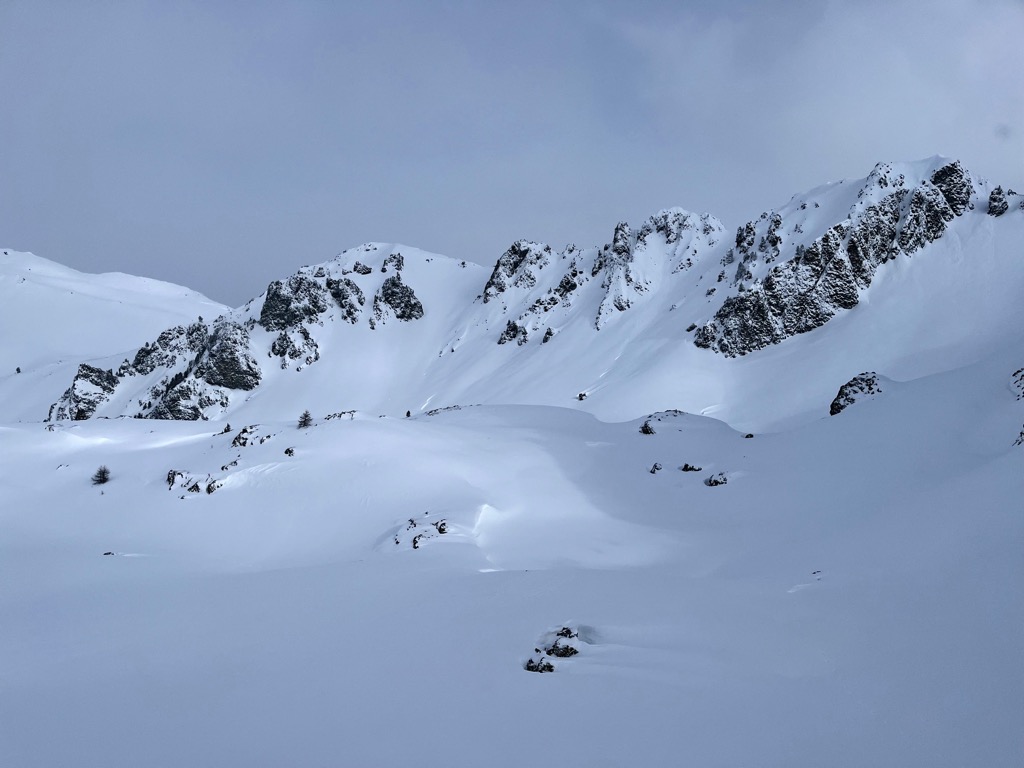
The Lune sector serves as the connector to the massive Via Lattea. There are no beginner pistes that descend into the Italian village of Cesana. Therefore, it may be difficult for a beginner to link the two areas on skis. While there are some fun pistes and a bit of good tree skiing, it’s not necessary to pay extra for the Domaine de la Lune if you are only in the area for a day or two.
The rest of Montgenèvre offers more than enough terrain — this will save you €8 a day on the lift ticket (more in the Passes section of this guide).
So, let's summarize the information about the ski lifts, pistes, and other skiing-related features and services of the Montgenèvre (Via Lattea) ski resort:
Slopes
Ski lifts
Other features and services
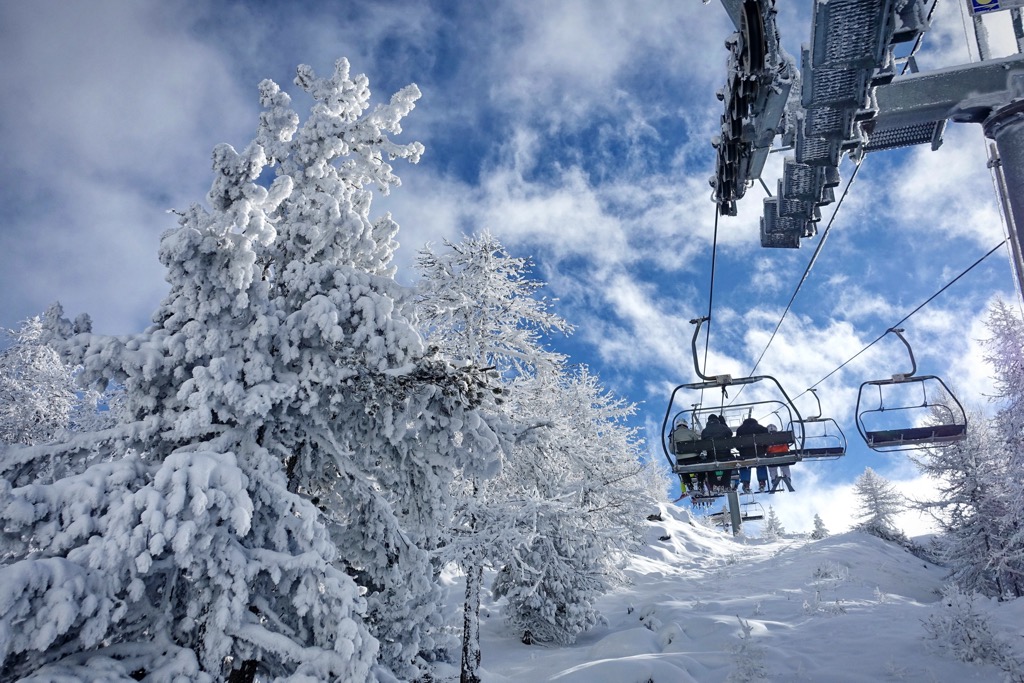
About 80 km (50 mi) of Nordic ski routes crisscross the valley. A groomed circuit at the base of Montgenèvre covers 15 km (9 mi). The remaining 65 km (40 mi) are located at the Alberts Plain at the base of the Col du Montgenèvre. The Plain is at the start of the road heading up to the Nevache Valley — I will discuss it in the next Backcountry Skiing section of this guide. Some of the routes follow the valley up to Nevache.
At 1,860 m (6,102 ft), the Montgenevre circuit is more likely to hold good snow, especially in the new climate regimen. 2021–22 and 2022–23 have been miserable for snow and many slopes at 1,400 m (4,593 ft) — Alberts Zone — have been bare mid-winter, especially those with southern exposure.
The resort charges €10 per day to use the trails at Montgenèvre. A season pass is €68. A day ski pass to Albert’s Plain trails costs €13.
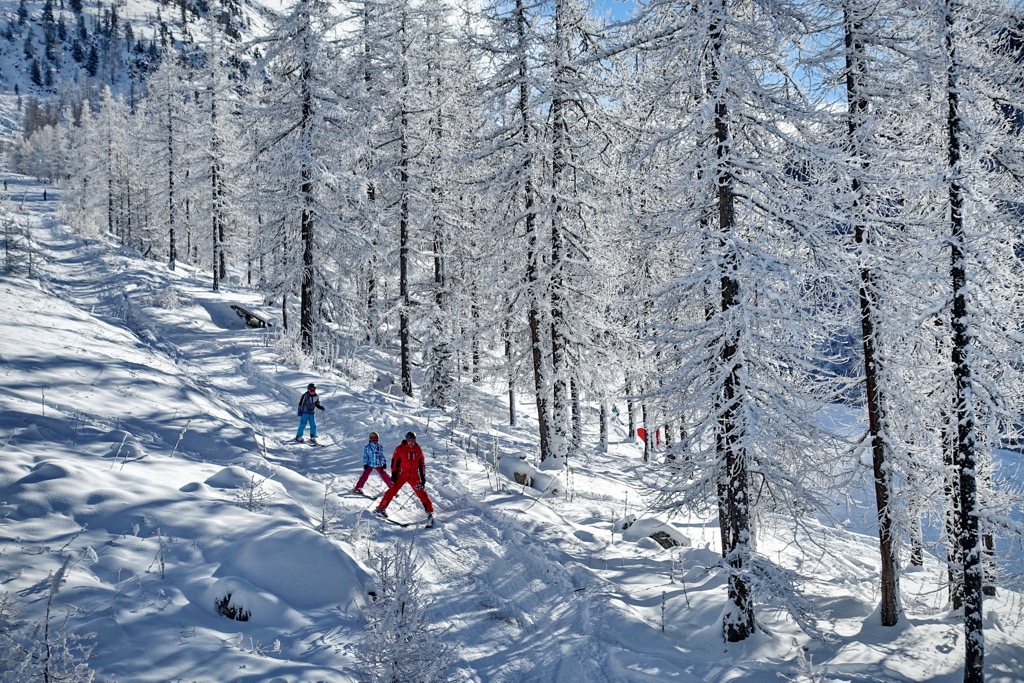
Backcountry ski routes crisscross this zone of the French Alps — there are thousands of descents within a few kilometers (miles) of Montgenèvre. However, two areas stand out: the Nevache Valley and the Col du Lautaret. These are not only the must-visit spots for skiers looking to explore beyond the boundaries of Montgenèvre, but also among the best spots in the world for ski touring.

The Vallée de la Clarée is an excursion worthy of a separate guide altogether. This quiet and secluded valley is nestled just to the north of Montgenèvre and Briançon. The valley is dotted with tiny villages and Nevache is the last commune before the road tapers off into historic farmsteads that now serve as summer getaways and refuges. It is as wonderful in the summer as in the winter.
There is a lifetime of backcountry skiing options in this valley. The best place to start with just a day or two to explore is the Refuge Buffère. Located on a bench at 2,000 m (6,564 ft) at the foot of the north-facing slopes of the Nevache Valley, the Buffère hut provides cozy beds and hearty meals. Located 400 m (1,312 ft) above Nevache, the hut is surrounded only by mountains and wilderness. To stay at the Buffère for an extended period or on a specific date, you must book early. However, there are often random days with availability. It is 53 euros per night.
Similarly to Montgenèvre, the Nevache Valley catches snow from multiple directions and usually has a good base. Moreover, the diversity of aspects and terrain within the valley will ensure that skiing is possible under almost any circumstance. However, the terrain most easily accessible from the Buffère is north-facing — great for powder, but not so great for corn. Tree skiing abounds in the lower elevations of the valley, and the alpine zone consists of everything from mellow slopes to big faces and couloirs.
While you will encounter other people in the valley, the Nevache is certainly more of a ‘hidden gem’ than the Col du Lautaret.
The Col du Lautaret (2,058 m / 6,751 ft) is a mountain pass on the north side of the Parc Nationale des Ecrins on the French 1091 highway. The pass serves as the main route between Briançon and all points west. The pass offers easy access to a huge diversity of alpine skiing. The top of the pass is about 40 minutes from the village of Montgenèvre.
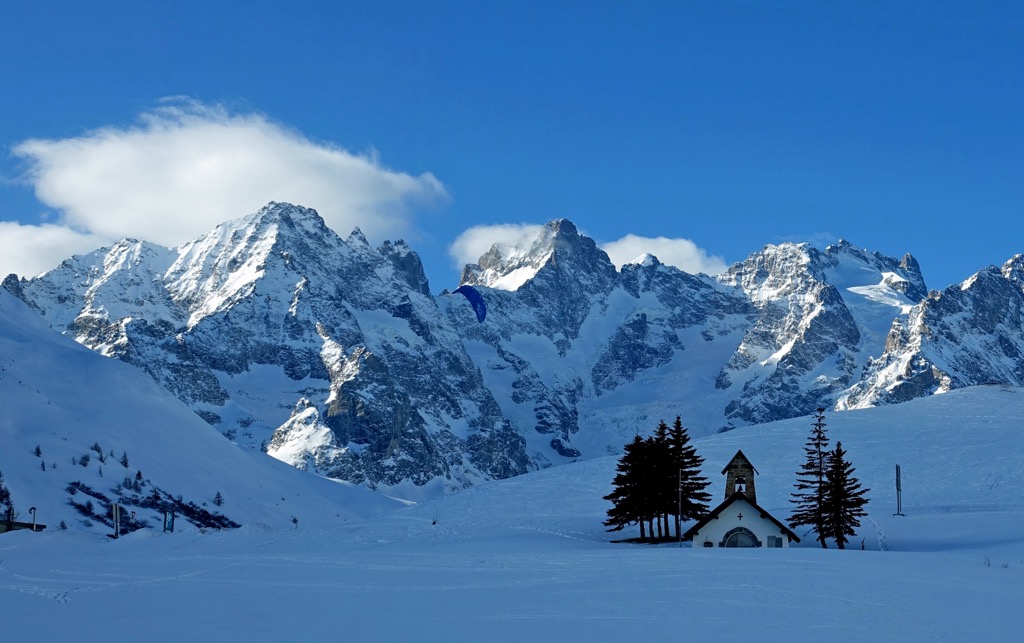
“The easy road access to such varied all aspects and all level terrain is more than rare. The fact that the touring season stretches from early November to mid-May most years is exceptional”, says Per As, La Grave mountain guide, on why the Col du Lautaret is his favorite place to ski touring.
It is accessible not only from the top of the Col du Lautaret but from many points to the east and west as well. The small village of Le Casset is an excellent staging point and Arsine offers a lifetime of lines and a refuge.
Not everything is visible from the road. Driving over the col, it may seem like everything is tracked out. The truth is that there are plenty of lines remaining out of sight. Nevertheless, the Col is no secret and the easy access routes can be littered with people. There’s no doubt that it’s the most crowded backcountry skiing domain in the region.
The two main ski passes of the Montgenèvre (Via Lattea) are the Montgenèvre ski pass and the Montgenèvre plus Mont de la Lune ski pass. But the only real reason to buy the latter option is if you are thinking about connecting with the Via Lattea. It will be impossible to return to Montgenèvre without this pass. Otherwise, almost all of the good pistes and slopes are included in the basic Montgenèvre ski pass.
Single day ski pass for Montgenèvre costs €35, and six days — €169. Montgenèvre plus Mont de la Lune ski pass costs: single day — €45, six days — €234 (it also comes with a day at the nearby ski resorts of Via Lattea, Puy St. Vincent, Serre Chevalier, Alpe d’Huez, or Les 2 Alpes during the period of validity).
Season ski pass prices: Montgenèvre — €775 (€542 until opening weekend) Montgenèvre plus Mont de la Lune — €800.
Montgenèvre also offers a wide selection of other ski passes, including family deals. Check its official website for more details on all of the pass options.
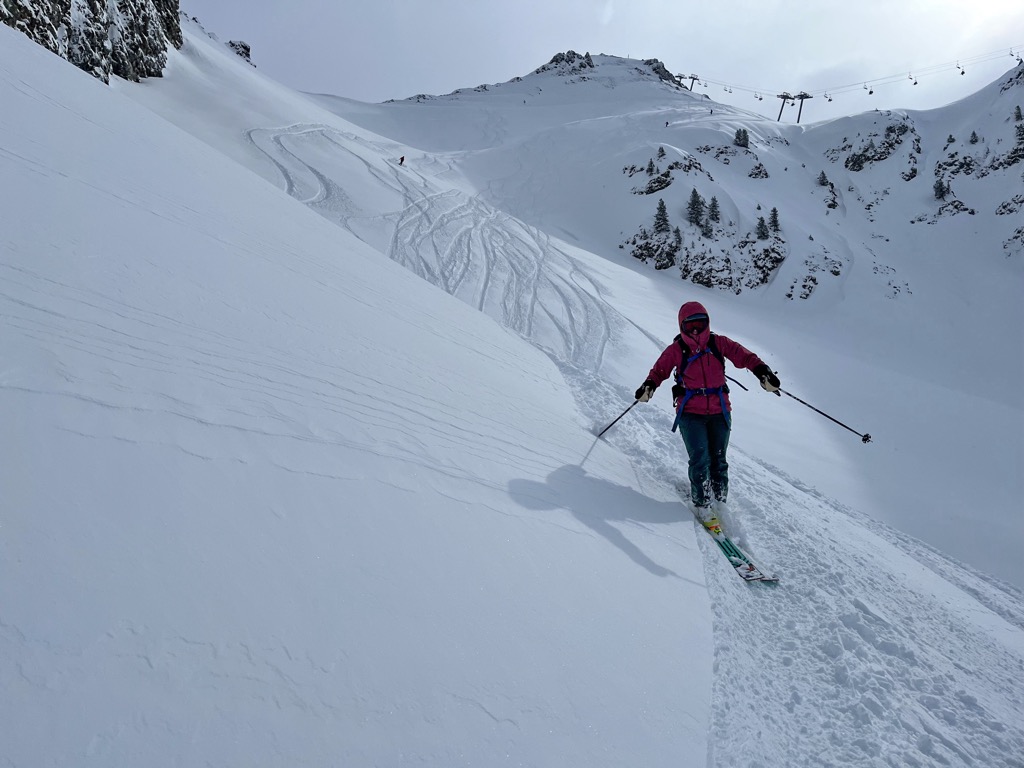
While at the resort, visit its official tourist office to get more information on the spot, take a paper map, ask for advice, and the like. Another one is located in Claviere on the Italian side.
Montgenèvre Tourist Office
767 Route d'Italie, 05100, Montgenèvre, France
On weekdays from 9 am to 6 pm, on weekends there is a lunch break between 12:30 and 13:30
+33492215252
Claviere Tourist Information Office
Via Nazionale 30, Claviere, Piedmont, Italy
+390122878856
info.claviere@turismotorino.org
French and Italians are passionate about their cuisine, but as is often the case, the French megaresort restaurants fall a bit short. Luckily, the Claviere base is easily accessible from Montgenèvre and is home to several fantastic (!) Italian restaurants.
As is the case with most resorts in the Alps, the restaurants in Montgenèvre and Claviere close around 2 pm and don’t open again until dinnertime. In fact, it can be difficult to find a place to eat after skiing. La Graal, in the center of Montgenèvre, was open for food and drink during that 4:30 pm twilight zone when our crew was starving. It’s not the best food, but the portions were huge and it hit the spot after a day of skiing.
For the best French Alpen-fare (think fondue) during “regular” business hours, Le Refuge is a cozy spot.
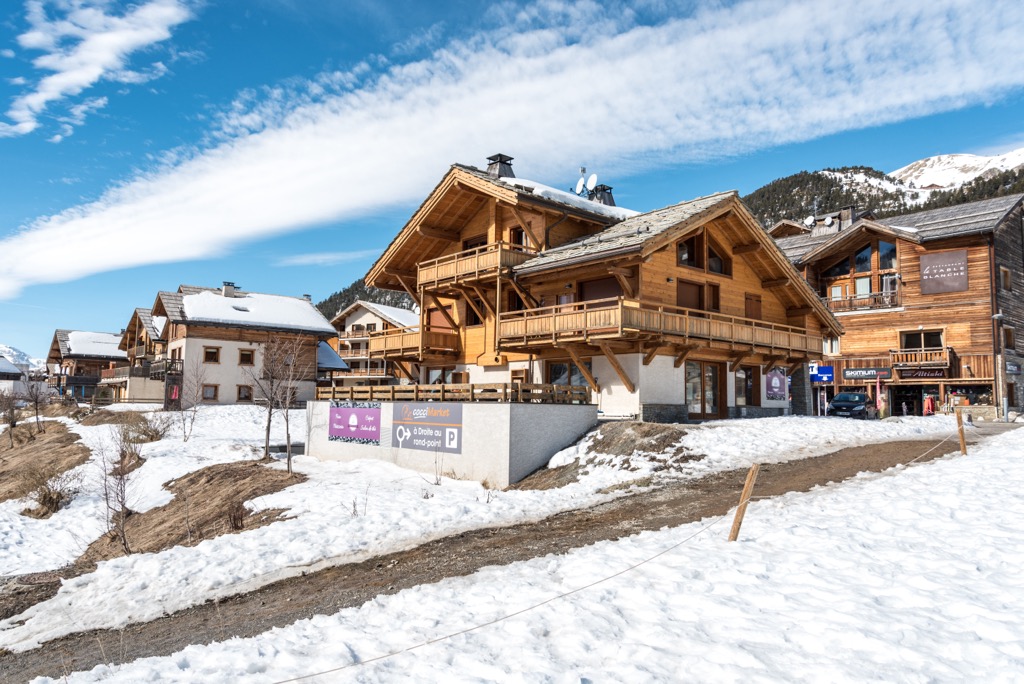
There are plenty of restaurants at Montgenèvre (Via Lattea) where you can go to have a glass of wine or beer after skiing, but there are no loud dance parties with sticky floors, and so on. You will be required to actually speak to your friends, and absurd levels of drunkenness are unlikely to be tolerated by the restaurant staff.
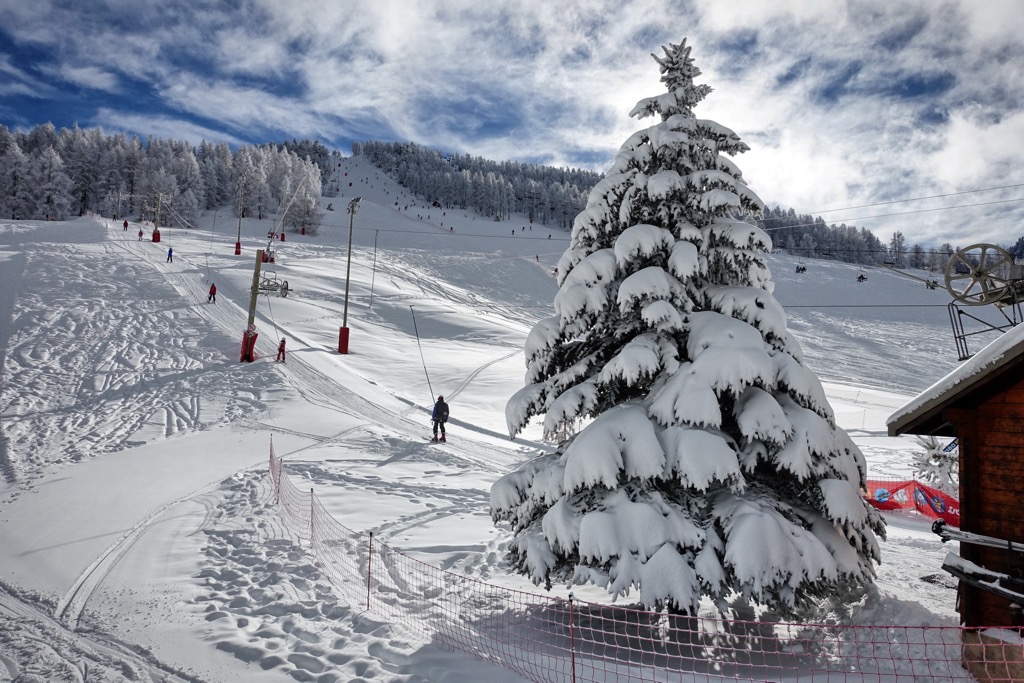
The CGH Résidences, the ANOVA, and Le Chalet Blanc look great for upscale slopeside accommodation and views. For something more affordable, folks have mentioned the La Rafale, although it has terrible reviews on Google.
In general, Montgenèvre accommodation is affordable compared to Switzerland, Austria, or the US, but is certainly not cheap. The accommodation is more affordable in Claviere, which also provides lift access to Montgenèvre. Even cheaper is Briançon, just a few kilometers (miles) away. However, the road getting up to the resort has the potential to be miserable.
The prices for everything, including accommodation, go up drastically in February during the French Vacances. Not only is accommodation more expensive, but it is hard to come by so you will have to book early if you want to visit during this period.
Anyway, it’s easy to hunt for properties in Montgenèvre using all of the usual tools: Airbnb, VRBO, Google, and Booking.com all have plenty of options, just to mention a few. After all, that’s the beauty of the megaresort.
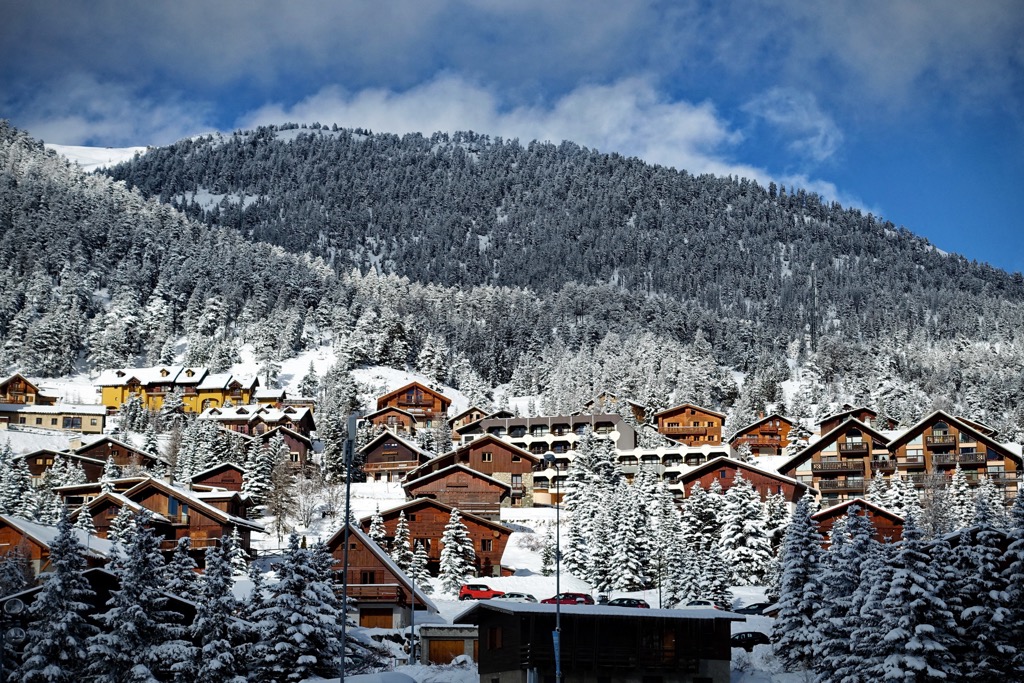
The Alps are home to the greatest concentration of ski resorts in the world and Montgenèvre is no exception. While there are dozens of them in the surrounding area, the two closest are the Via Lattea and Serre Chevalier.
The closest resort is the massive Via Lattea (“The Milky Way”) interconnected area between Italy and France defined by Sestriere, the largest and most famous resort of the group. Most training venues and events for the 2006 Winter Olympics in Torino were on the slopes of the Via Lattea.
Sestriere was the first purpose-built resort in Italy, dating back to the 1930s. Sestriere feels like a megaresort rather than a traditional village. However, some of the connected communes are quite charming. Because of its historical roots as farming pasture, Sestriere is also mostly alpine meadow rather than tree and rock.
Sestriere provides access to up to 400 km (249 mi) of pistes and 70 ski lifts in total. In particular, through a massive system of ski lifts, the resort connects to the ski areas of Claviere, San Sicario, Sauze d’Oulx, and Pragelato, as well as Montgenèvre itself. The latter is the only French resort, so it’s possible to ski across the border into France.
Sestriere is accessible by car or bus, but also by skis from Montgenèvre with the Domaine de la Lune lift pass.
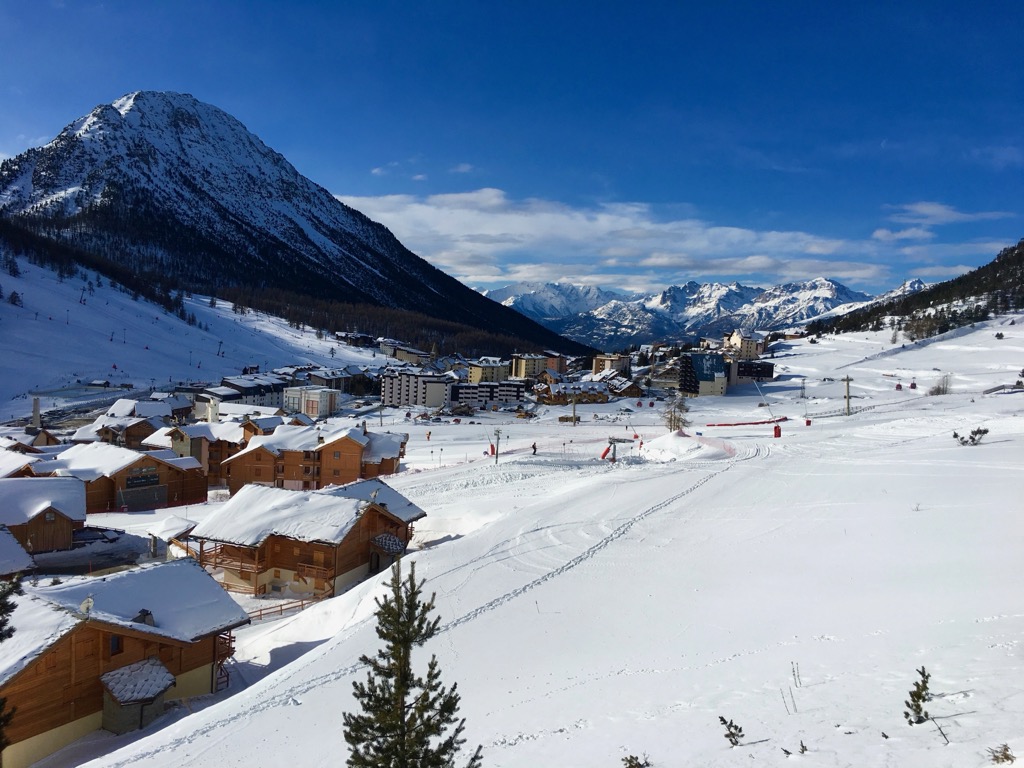
Serre Chevalier Ski Area is just incredible. Skiing there has a very similar vibe to Montgenèvre. There are many wide pistes, good freeriding itineraries, hike-to terrain, and a lift system that stretches over several small (by French Alps standards) peaks.
However, Serre Che, as we affectionately call it, is just so much bigger. It also consists of smaller ski areas, including Briançon, Chantemerle, Villeneuve-la-Salle, and Le Monêtier-les-Bains. It is the largest ski resort in Provence-Alpes-Côte D'Azur with more than 250 km (155 mi) of slopes and more than 60 ski lifts, which reach 2,800 m (9,186 ft). The tree skiing amongst ancient larch forests is incredible. It’s some of the best in Europe when there is snow.
Speaking of snow, there’s usually plenty of it. Like Montgenèvre, Serre Chevalier gets storms from multiple directions. They also have extensive snowmaking on the pistes. I have a friend who has visited the resort over 15 times over the past two decades. He tells me that every single time there was more than enough snow to ski the trees and the itinerary descends to the village. Yet, for the past two years, there has hardly been enough snow on the pistes at the top of the mountain, let alone the forests at the bottom.
Another unique thing about Serre Che is the access from the town of Briançon. There are also several other base areas stretched out over many kilometers (miles) along the valley, but Briançon is unlike most other ski towns in Europe. The historical Old Town dates back 400 years. The restaurants and accommodation are affordable. There’s none of the glitz and glam of other ski resorts — all of that exists in the other base villages. Briançon is a bit rough around the edges in a way that I appreciate.
